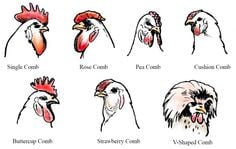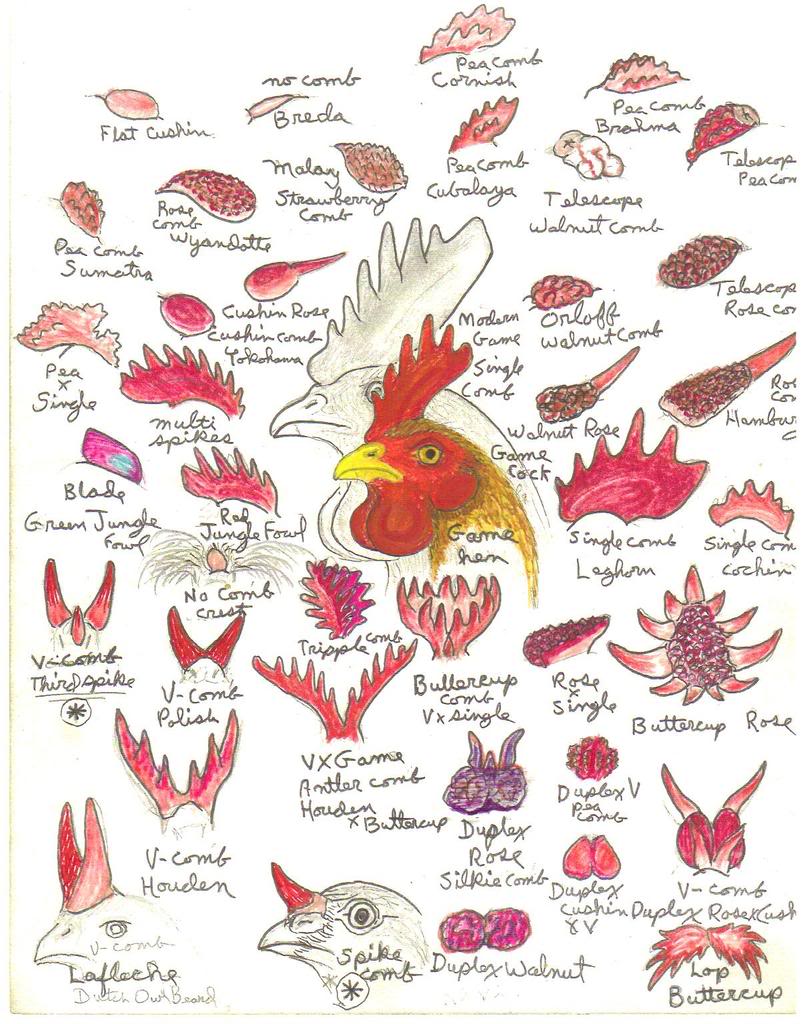Almost a year ago I became interested in Icelandic chickens. A stray bird flew over our fence and joined our flock. I posted pictures here and was told by a few people that it could be an Icelandic. I did some research and contacted Lyle Behl, the man who imported the first Icelandic chicken hatching eggs into the US in 2003. He verified that it appeared to be an Icelandic to him and told me that he had shipped eggs to California in the past. Well my excitement was dashed a couple of weeks later when she laid a green egg. Icelandic chickens lay white eggs. My Icelandic was crossed with an EE!
By this time I was hooked and I wanted to be part of the effort to save the Icelandic chickens. They were nearly extinct in Iceland since the 1950's when commercial poultry producers imported breeds more conducive to egg production and eating. In the 1970's a veterinarian with the Agricultural School of Iceland singlehandedly saved the Icelandic chicken from extinction. Even now, there are fewer than 3,000 of these birds in Iceland but there is an ongoing effort to save them. I learned everything I could about Icelandic chickens and communicated with Lyle Behl. He put me in contact with people on the West coast to whom he has shipped eggs.
I had the fortune to find Sigrid and Sveinn in southern California. Iceland natives, they are passionate about preserving the chickens of their country. They have imported hatching eggs on three trips to Iceland since Lyle hatched the first 11 chicks in 2003. I told Sigrid about my interest in joining the cause, but she didn't make it easy. I think getting accepted into my registered nursing program was easier than getting my hands on an Icelandic hatching egg. We had many conversations and written exchanges before Sigrid decided I was worthy. All I expected was a few hatching eggs but that wasn't to be. Instead, Sigrid and Sveinn gifted me with two Icelandic hens and two Icelandic roosters! I had not seen pictures of them and kind of assumed that they would be the ugly ducklings of her flock but I was still so excited about getting them. After much ado and worry they arrived last night and I went to the post office hub at 10 p.m. to pick them up.
When I opened the box I literally cried. They were the most gorgeous birds I had ever seen. I knew from my research and conversations with Sigrid that they were colorful and unique, often with crests on their heads. Sigrid says hatching an Icelandic chicken is always like winning a lottery. You never know what you are going to get. They can and do look completely different from the parents. I spoke with Sigrid this morning and she told me that my hens came directly from the veterinarian who saved them from extinction. My roosters came from a remote area off the Northeast corner of Iceland. She brought the eggs back with her this fall and they hatched October 23, 2009. I now have one of the most genetically diverse flocks of Icelandics in the United States, OVERNIGHT!
I did not pay for my birds nor will I pay for hatching eggs from Sigrid. Instead I will donate money to the Protective Society for the Icleandic Chickens in Iceland. Any future profit I make from the sale of hatching eggs and birds will go there as well. I am really excited about my new venture and just had to share it with my BYC friends. Here are pictures of my flock of Icelandic chickens:
Here they are being introduced to Annie:
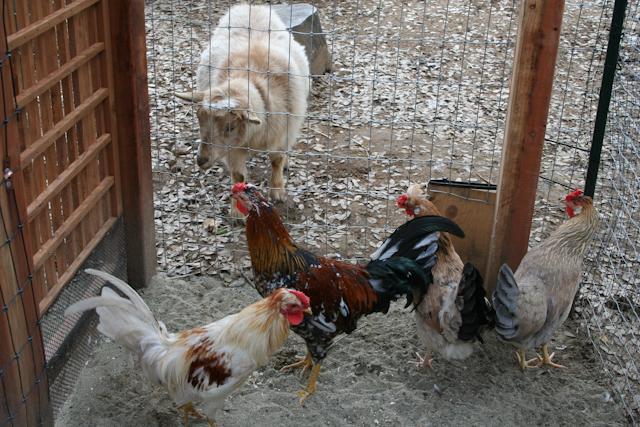
This is Orri, which is a name for male poultry in Old Icelandic. He is almost four months old.
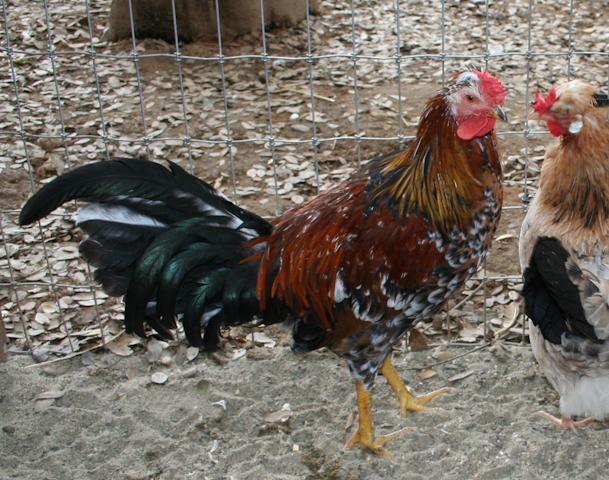
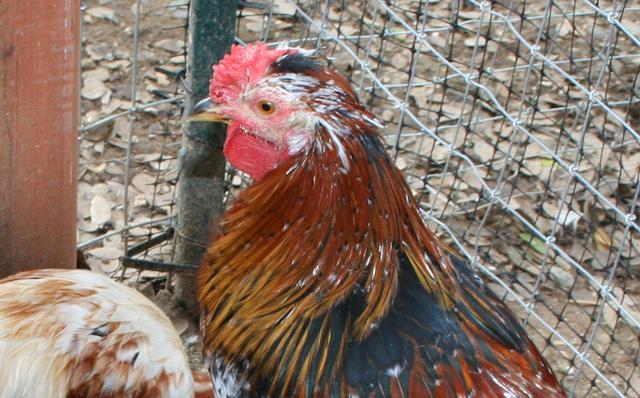
This is Isi, (pronounced Icee). He too is almost four months old.
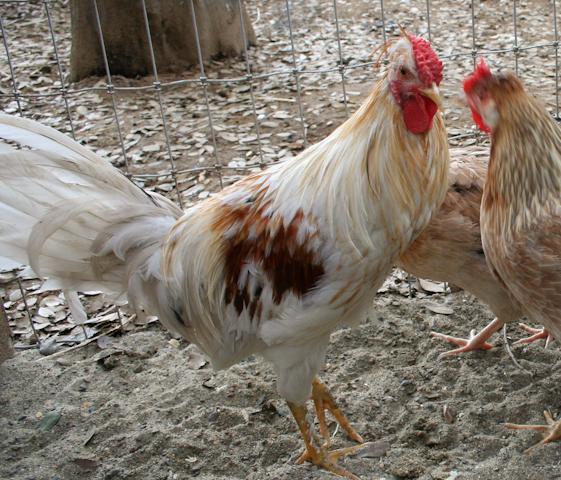
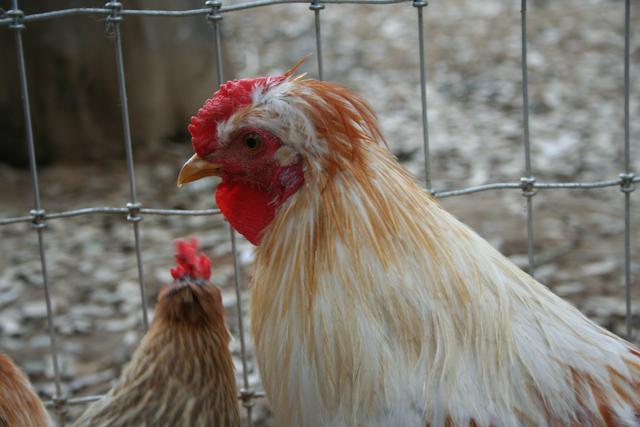
This is my 11 month old hen, Lukka, meaning lucky in Icelandic.
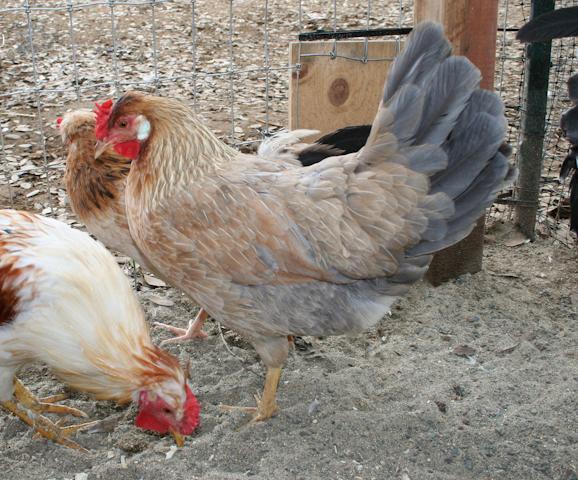
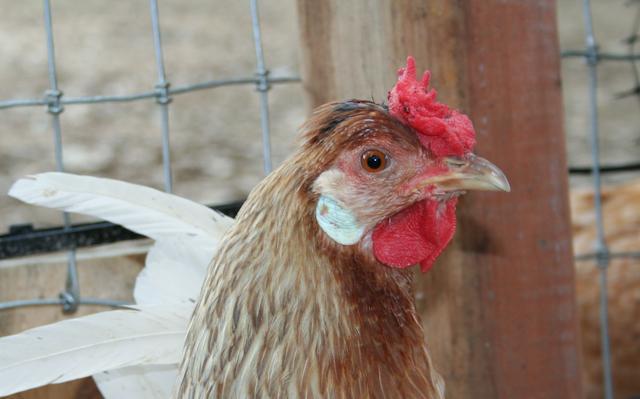
This is Henna, for the hair color! She is 12 months old.
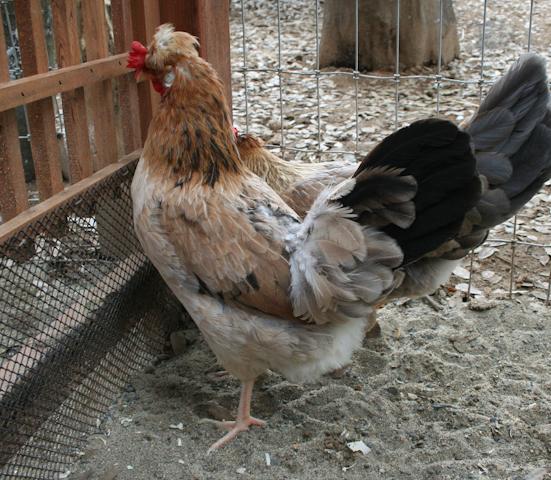
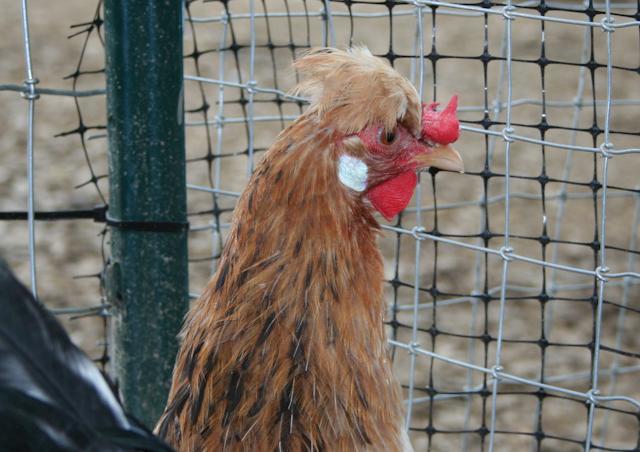
If you have read this far, THANK YOU! I guess you can tell I am excited.

Edited to add that the importation of the hatching eggs was done legally with the required permits, blood testing, inspections, etc. But after recent changes in airline security it may be more difficult, if not impossible to do.
By this time I was hooked and I wanted to be part of the effort to save the Icelandic chickens. They were nearly extinct in Iceland since the 1950's when commercial poultry producers imported breeds more conducive to egg production and eating. In the 1970's a veterinarian with the Agricultural School of Iceland singlehandedly saved the Icelandic chicken from extinction. Even now, there are fewer than 3,000 of these birds in Iceland but there is an ongoing effort to save them. I learned everything I could about Icelandic chickens and communicated with Lyle Behl. He put me in contact with people on the West coast to whom he has shipped eggs.
I had the fortune to find Sigrid and Sveinn in southern California. Iceland natives, they are passionate about preserving the chickens of their country. They have imported hatching eggs on three trips to Iceland since Lyle hatched the first 11 chicks in 2003. I told Sigrid about my interest in joining the cause, but she didn't make it easy. I think getting accepted into my registered nursing program was easier than getting my hands on an Icelandic hatching egg. We had many conversations and written exchanges before Sigrid decided I was worthy. All I expected was a few hatching eggs but that wasn't to be. Instead, Sigrid and Sveinn gifted me with two Icelandic hens and two Icelandic roosters! I had not seen pictures of them and kind of assumed that they would be the ugly ducklings of her flock but I was still so excited about getting them. After much ado and worry they arrived last night and I went to the post office hub at 10 p.m. to pick them up.
When I opened the box I literally cried. They were the most gorgeous birds I had ever seen. I knew from my research and conversations with Sigrid that they were colorful and unique, often with crests on their heads. Sigrid says hatching an Icelandic chicken is always like winning a lottery. You never know what you are going to get. They can and do look completely different from the parents. I spoke with Sigrid this morning and she told me that my hens came directly from the veterinarian who saved them from extinction. My roosters came from a remote area off the Northeast corner of Iceland. She brought the eggs back with her this fall and they hatched October 23, 2009. I now have one of the most genetically diverse flocks of Icelandics in the United States, OVERNIGHT!
I did not pay for my birds nor will I pay for hatching eggs from Sigrid. Instead I will donate money to the Protective Society for the Icleandic Chickens in Iceland. Any future profit I make from the sale of hatching eggs and birds will go there as well. I am really excited about my new venture and just had to share it with my BYC friends. Here are pictures of my flock of Icelandic chickens:
Here they are being introduced to Annie:

This is Orri, which is a name for male poultry in Old Icelandic. He is almost four months old.


This is Isi, (pronounced Icee). He too is almost four months old.


This is my 11 month old hen, Lukka, meaning lucky in Icelandic.


This is Henna, for the hair color! She is 12 months old.


If you have read this far, THANK YOU! I guess you can tell I am excited.

Edited to add that the importation of the hatching eggs was done legally with the required permits, blood testing, inspections, etc. But after recent changes in airline security it may be more difficult, if not impossible to do.
Last edited by a moderator:





